Do you have a question about the Sea-doo EXPLORER PRO 170 2023 and is the answer not in the manual?
Important safety information and operating guidelines to read before riding.
Explanation of symbols and words used to emphasize important information.
Purpose and recommended use of the operator's guide.
Essential safety precautions and instructions before operating the watercraft.
Requirements for operator age, qualifications, and physical/mental condition.
Mandatory protective equipment for riders, including PFDs and specific attire.
Discussion on the pros and cons of wearing helmets for watersports.
Explanation of the watercraft's jet propulsion system and how it works.
How to steer the watercraft using the handlebars and throttle.
Proper use and importance of the safety lanyard for engine cut-off.
Information about the braking system (iBR) and how to use it safely.
Guidelines for safely carrying cargo and using storage compartments.
Warnings and advice regarding the installation of accessories and modifications.
Instructions for safely operating the watercraft with passengers.
Strategies and rules for preventing collisions with other watercraft and objects.
Advice on safe riding practices and staying within limits.
Critical safety information about CO poisoning and prevention methods.
Criteria for selecting a safe area to practice watercraft maneuvers.
Specific exercises to familiarize with controls and handling characteristics.
Step-by-step instructions for safely refueling the watercraft.
Specifications for the type and grade of fuel required for the engine.
Information about safety labels affixed to the vehicle for user awareness.
Details of Canadian compliance and maximum safe limits.
Overview of key safety warnings and operating instructions from on-product labels.
Pictorial guidance on essential rider attire, including PFD and neoprene shorts.
Warning about cargo load limits and safe loading practices.
Warning and instructions for safe re-boarding procedures.
Warning about moving parts in the iBR gate area and keeping hands/feet clear.
Checklist of essential items to inspect before launching the watercraft.
Checks to perform after launching and before riding.
Steps to take after finishing a ride to prevent environmental impact.
Recommendation for professional inspection and preparation services.
Detailed explanation of all watercraft controls and their functions.
Identification and description of various watercraft components and features.
Overview of the multifunction display layout and its sections.
Explanation of various warning and telltale lights and their meanings.
How to navigate through menus and select functions on the display.
Step-by-step guide to pair a smartphone with the watercraft via Bluetooth.
Recommended procedure and limitations for the initial break-in period.
Safe methods for boarding the watercraft from a dock or shallow/deep water.
Step-by-step instructions for starting the engine safely, including tether cord use.
Detailed explanation of the braking system (iBR) and practice recommendations.
Mode offering instant throttle response and rapid acceleration.
Mode designed for smoother throttle application and increased fuel efficiency.
Procedures for cleaning the jet pump intake and impeller.
Instructions for righting the watercraft if it capsizes.
Overview of maintenance intervals based on calendar time or hours used.
Specific maintenance tasks required for operation in salt or dirty water.
Recommended engine oil, specifications, and level checking procedure.
Procedures for removing and installing spark plugs, including torque specs.
Location of fuse box, fuse inspection, and description of each fuse.
Essential care steps after each use, including flushing and rinsing.
Guidelines for proper storage, including fuel system and engine preparation.
Steps to protect the fuel system during storage, including stabilizer.
How to find and identify key serial numbers for the watercraft and engine.
Information regarding emissions control compliance labels and standards.
Technical specifications and regulatory compliance for the multifunction gauge.
Owner's role in maintaining engine emissions standards.
Detailed specifications for the Rotax 1630 ACE - 170 engine.
Specifications related to the watercraft's systems and capacity.
General guidelines and common issues for troubleshooting.
Common causes and solutions when the engine fails to start.
Causes and solutions for engine misfires or irregular running.
Troubleshooting steps for engine overheating issues.
Reasons and solutions for loss of engine acceleration or power.
Troubleshooting for issues preventing the watercraft from reaching top speed.
Troubleshooting water found in the bilge area.
How fault codes are recorded, displayed, and interpreted.
Explanation of indicator lights and messages displayed in the information center.
Prerequisites that must be met for warranty coverage to be valid.
Steps to follow when experiencing a defect and seeking warranty service.
List of parts covered under the emission-related warranty.
Owner's responsibilities regarding maintenance and presenting the watercraft for service.
Owner's responsibilities for maintaining and presenting the engine for warranty service.
Steps for obtaining warranty service internationally.
Conditions for warranty coverage in EEA, CIS, and Turkey.
Important safety information and operating guidelines to read before riding.
Explanation of symbols and words used to emphasize important information.
Purpose and recommended use of the operator's guide.
Essential safety precautions and instructions before operating the watercraft.
Requirements for operator age, qualifications, and physical/mental condition.
Mandatory protective equipment for riders, including PFDs and specific attire.
Discussion on the pros and cons of wearing helmets for watersports.
Explanation of the watercraft's jet propulsion system and how it works.
How to steer the watercraft using the handlebars and throttle.
Proper use and importance of the safety lanyard for engine cut-off.
Information about the braking system (iBR) and how to use it safely.
Guidelines for safely carrying cargo and using storage compartments.
Warnings and advice regarding the installation of accessories and modifications.
Instructions for safely operating the watercraft with passengers.
Strategies and rules for preventing collisions with other watercraft and objects.
Advice on safe riding practices and staying within limits.
Critical safety information about CO poisoning and prevention methods.
Criteria for selecting a safe area to practice watercraft maneuvers.
Specific exercises to familiarize with controls and handling characteristics.
Step-by-step instructions for safely refueling the watercraft.
Specifications for the type and grade of fuel required for the engine.
Information about safety labels affixed to the vehicle for user awareness.
Details of Canadian compliance and maximum safe limits.
Overview of key safety warnings and operating instructions from on-product labels.
Pictorial guidance on essential rider attire, including PFD and neoprene shorts.
Warning about cargo load limits and safe loading practices.
Warning and instructions for safe re-boarding procedures.
Warning about moving parts in the iBR gate area and keeping hands/feet clear.
Checklist of essential items to inspect before launching the watercraft.
Checks to perform after launching and before riding.
Steps to take after finishing a ride to prevent environmental impact.
Recommendation for professional inspection and preparation services.
Detailed explanation of all watercraft controls and their functions.
Identification and description of various watercraft components and features.
Overview of the multifunction display layout and its sections.
Explanation of various warning and telltale lights and their meanings.
How to navigate through menus and select functions on the display.
Step-by-step guide to pair a smartphone with the watercraft via Bluetooth.
Recommended procedure and limitations for the initial break-in period.
Safe methods for boarding the watercraft from a dock or shallow/deep water.
Step-by-step instructions for starting the engine safely, including tether cord use.
Detailed explanation of the braking system (iBR) and practice recommendations.
Mode offering instant throttle response and rapid acceleration.
Mode designed for smoother throttle application and increased fuel efficiency.
Procedures for cleaning the jet pump intake and impeller.
Instructions for righting the watercraft if it capsizes.
Overview of maintenance intervals based on calendar time or hours used.
Specific maintenance tasks required for operation in salt or dirty water.
Recommended engine oil, specifications, and level checking procedure.
Procedures for removing and installing spark plugs, including torque specs.
Location of fuse box, fuse inspection, and description of each fuse.
Essential care steps after each use, including flushing and rinsing.
Guidelines for proper storage, including fuel system and engine preparation.
Steps to protect the fuel system during storage, including stabilizer.
How to find and identify key serial numbers for the watercraft and engine.
Information regarding emissions control compliance labels and standards.
Technical specifications and regulatory compliance for the multifunction gauge.
Owner's role in maintaining engine emissions standards.
Detailed specifications for the Rotax 1630 ACE - 170 engine.
Specifications related to the watercraft's systems and capacity.
General guidelines and common issues for troubleshooting.
Common causes and solutions when the engine fails to start.
Causes and solutions for engine misfires or irregular running.
Troubleshooting steps for engine overheating issues.
Reasons and solutions for loss of engine acceleration or power.
Troubleshooting for issues preventing the watercraft from reaching top speed.
Troubleshooting water found in the bilge area.
How fault codes are recorded, displayed, and interpreted.
Explanation of indicator lights and messages displayed in the information center.
Prerequisites that must be met for warranty coverage to be valid.
Steps to follow when experiencing a defect and seeking warranty service.
List of parts covered under the emission-related warranty.
Owner's responsibilities regarding maintenance and presenting the watercraft for service.
Owner's responsibilities for maintaining and presenting the engine for warranty service.
Steps for obtaining warranty service internationally.
Conditions for warranty coverage in EEA, CIS, and Turkey.
| Type | Personal Watercraft |
|---|---|
| Seating | 3 |
| Engine | Rotax 1630 ACE |
| Horsepower | 170 hp |
| Fuel Capacity | 18.5 US gal (70 L) |
| Width | 49.4 in. (125.5 cm) |
| Storage Capacity | 38 US gal (144 L) |
| Engine Type | Rotax 1630 ACE |
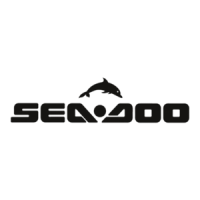

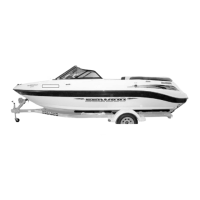
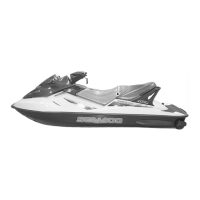
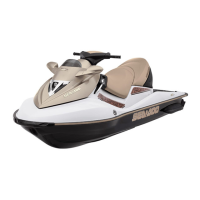


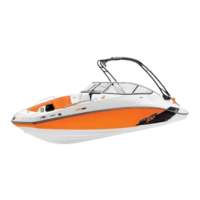


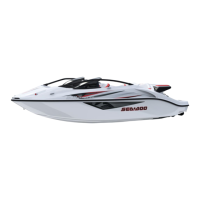

